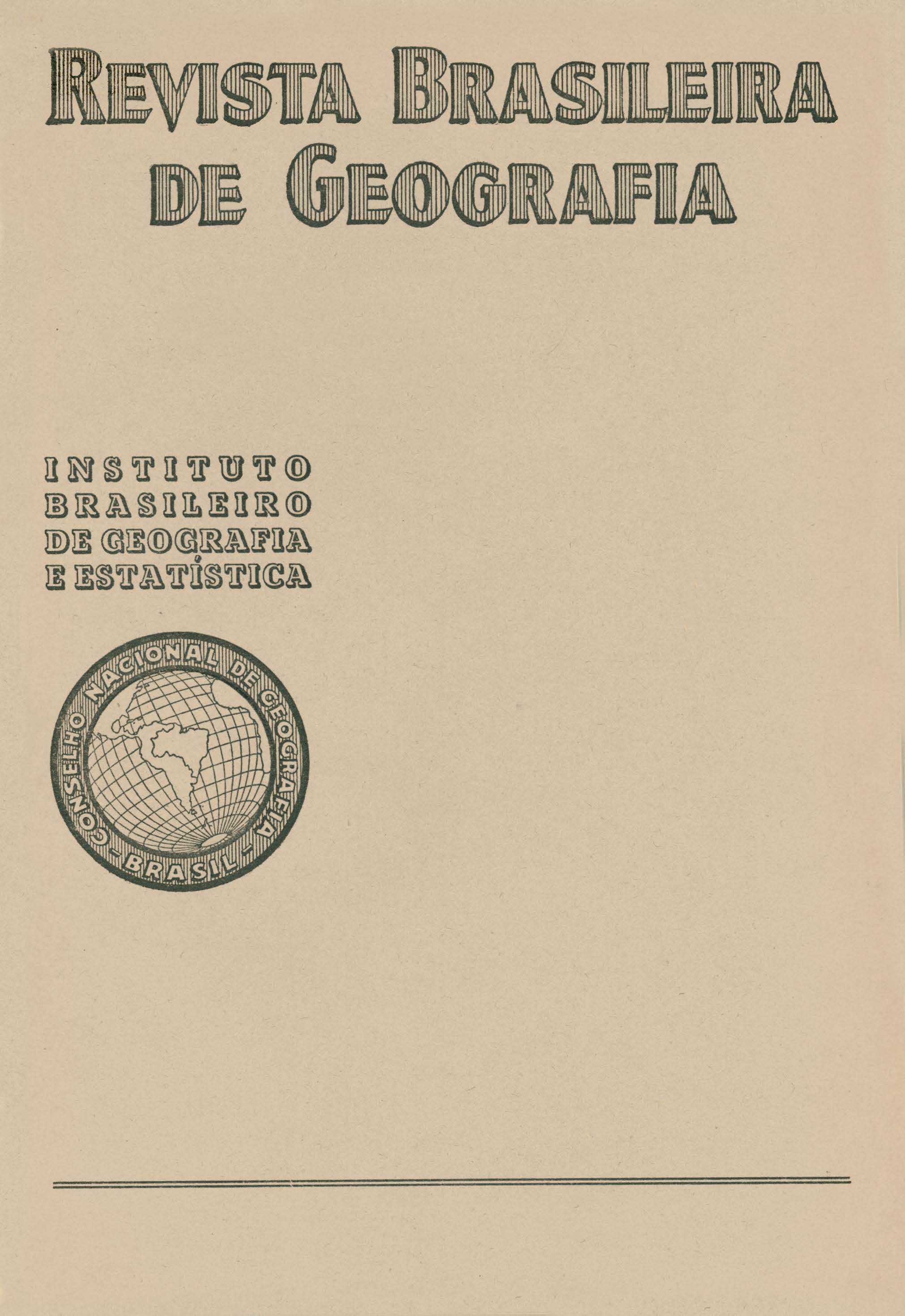O Recôncavo da Bahia e o petróleo do Lobato
considerações de caráter geográfico
Keywords:
Petróleo, Mapeamento geológico, Topografia, Geologia, BahiaAbstract
The author, Technical Adviser to the Council, makes a geographical survey of the region called Recôncavo, in the State of Baía, where at the locality of Lobato, oil of first quality spouted from N. 163 well of the Ministry of Agriculture, in January of the current year. Knowing the region and as a specialist in the question of petroleum, the author presents an original article of much interest at the moment, in which he studies geographically the region from the point of view of the existence of petroleum.
A description of the region termed Recôncavo of Baía, which surrounds All Saints' Bay, opens the article at the same time as it defines the principal geographical characteristics, taking into account the local geology. The author thinks that the bay is of a relatively recent geological formation, a large basin of sedimentation where cretaceous and pre-cretaceous layers were formed; the generalized occurrence of sedimentation shales, the author considers as a deposition of argils in quiet waters during very long periods. With physiographic and chiefly geologic explanations, the Recôncavo coast is described, in which the following points stand out: The Tainheiros creek or port, where the petroliferous region of Lobato is located; the Itapagipe península where there are beautiful tectonic exposures of the cretaceous layer· the bay of Aratú, an adequate site for an industrial port, the topography of which reveals great tectonic disturbances, in fact today there occur still seismic shocks; the Maré island, high and formed of sandstones; the Itaparica island, the main accident of the Recôncavo of tectonic origin.
In the second chapter the author studies the features of the interior of the Recôncavo ·pointing out three principal topographic forms: '
1) the smooth wavy outlines of the cretaceous, cultivated with sugar cane, the most valuable lands of the region;
2) the accidental forms of the Barriers, due to the erosion in the very sandy land, therefore less fertile and less valuable;
3) the sandy plains of the Camassari region, strewn with small isolated mountains a region of little value and sparsely inhabited. ' Then in a third chapter substantial considerations are made on the geology of the Recôncavo, accompanied by a map and various schematic drawings and photos. Geologically the Recôncavo 1s a sedimentary basin wedged between two old crystalline nuclei, one to the east, the other to the west, with the edges almost towards N.E.-S.W. and forming a kind of "graben". The author considers as a very important point for· the knowledge of the genesis of the basin and also for the oil problem, the petrographic study of the crystalline rocks of the two borders: to the W., in the Cachoeira region, it is a gneiss, with parallelism of dark elements and abundance of pink feldspars; while to the E., in the neighbourhood of the city of Salvador and Lobato, it is a dark rock revealing acid injections. The question of the thickness of the sedimentary layer of the basin ls one of the fundamental points of the petroleum problem. Geological surveys revealed that the layer ls of pre-cretacean, probably permian sediments, whence its great thickness, which, later on, geophysical works confirmed, thereby increasing extraordinarily the probab1ltty of petroleum occurring abundantly.
The quality of the petroleum found is commented upon In the fourth cha.pter. Here the author presents the result of the analysis officially made, which shows that Lobato oil is of the best quality and suitable to yield pure and valuable products, without complicated refining operations; it is a paraffine oil containing 20% of light naphthas, these including the gasoline for aviation and automobile.
Finally, in the last chapter, the author outlines the panorama of the future. After affirming the capacity of the petroliferous deposit of Lobato, he comments on the policy to be followed for extracting the precious fuel, stressing the importance of the cooperation of private concerns. He shows the favourable conditions of the Recôncavo for the exploitation of petroleum: location on the coast which makes the transportation easier by sea; situation at the middle of the Brazilian coast which permits an equitable and economic distribution throughout the country; the topographic and climatic conditions of the Recôncavo, ensuring adequate installation of the machinery for the extraction as well as for the establishment of an industrial centre, right at the mouth of the well.






